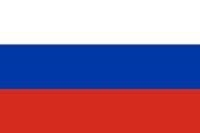
Размер рынка антимикробных покрытий превысит 10,1 миллиарда долларов к 2032 году
2024-07-25 13:47
Сектор здравоохранения остается основным потребителем антимикробных покрытий.
Фото / stockadobe.com
По прогнозам, мировой рынок антимикробных покрытий превысит $10,1 млрд к 2032 году, что обусловлено повышением осведомленности о гигиене и растущим спросом на борьбу с инфекциями в различных секторах, включая здравоохранение, продукты питания и напитки и строительство. В этой статье рассматриваются ключевые факторы, движущие рынок, текущие тенденции, вызовы и будущие возможности.
Динамика рынка
Драйверы роста
- Увеличение спроса в сфере здравоохранения: сектор здравоохранения остается основным потребителем антимикробных покрытий из-за необходимости поддержания стерильных сред. Больницы, клиники и хирургические центры все чаще применяют эти покрытия на медицинских устройствах, хирургических инструментах и поверхностях учреждений для предотвращения распространения инфекций, связанных с здравоохранением (ИЗС). Недавняя пандемия COVID-19 также подчеркнула важность строгих мер по борьбе с инфекцией, стимулирующих спрос на антимикробные решения.
- Растущая осведомленность потребителей: С ростом осведомленности о важности гигиены и санитарии потребители все чаще выбирают продукты с антимикробными свойствами. Эта тенденция очевидна в секторе домашнего хозяйства, где антимикробные покрытия применяются на кухонную технику, ванные принадлежности и мебель для повышения чистоты и безопасности.
- Применение в пищевой и напитковой промышленности: пищевая и напитковая промышленность является еще одним важным двигателем роста. Антимикробные покрытия используются на оборудовании для переработки пищевых продуктов, упаковке и складских помещениях для подавления роста микробов, тем самым продлевая срок хранения и обеспечивая безопасность пищевых продуктов. Это особенно важно, учитывая строгие правила безопасности пищевых продуктов во всем мире.
Текущие тенденции
- Нанотехнологии в антимикробных покрытиях: интеграция нанотехнологий в антимикробные покрытия революционизировала индустрию. Нанопокрытия обеспечивают превосходную антимикробную эффективность из-за их большего соотношения площади поверхности к объему, что усиливает взаимодействие с микробными клетками. Эти покрытия широко изучаются и разрабатываются для различных приложений, включая медицинские устройства и потребительские изделия.
- Экологически чистые антимикробные покрытия: Экологическая устойчивость является растущей проблемой, которая приводит к разработке экологически чистых антимикробных покрытий. Эти покрытия используют биоразлагающиеся и нетоксичные материалы, снижая их воздействие на окружающую среду. Ожидается, что продвижение к зеленым решениям приведет к значительным инновациям в этой области.
- Умные антимикробные покрытия, которые реагируют на стимулы окружающей среды, такие как изменения температуры или влажности, приобретают тягу. Эти покрытия могут выделять антимикробные агенты только при необходимости, делая их более эффективными и продлевая срок их службы.
Вызовы
- Регулирующие препятствия: Рынок антимикробных покрытий сталкивается с жесткими нормативными требованиями, особенно в отношении безопасности и эффективности. Соблюдение таких правил, как Агентство по охране окружающей среды (EPA) в США и Регламент по биоцидным продуктам (BPR) в Европе, может быть сложным и требовать много времени для производителей.
- Высокие затраты: производство и применение антимикробных покрытий, особенно тех, которые включают передовые технологии, такие как нанотехнологии, могут быть дорогими. Это может ограничить их внедрение, особенно на ценообразных рынках.
- Устойчивость к противомикробным препаратам: растут опасения по поводу противомикробной устойчивости (AMR), когда микроорганизмы развивают устойчивость к противомикробным агентам. Это может снизить эффективность антимикробных покрытий со временем, что требует непрерывных исследований и разработок, чтобы опередить устойчивые штаммы.
Будущие возможности
- Расширение на развивающихся рынках: страны с формирующейся экономикой, особенно в Азиатско-Тихоокеанском регионе и Латинской Америке, открывают значительные возможности для роста. Ожидается, что быстрая урбанизация, рост инфраструктуры здравоохранения и рост одноразовых доходов в этих регионах будут стимулировать спрос на антимикробные покрытия.
- Продолжающийся прогресс в области материаловедения и нанотехнологий, вероятно, приведет к более эффективным и экономически эффективным антимикробным покрытиям. Ожидается, что такие инновации, как самоочищающиеся поверхности и многофункциональные покрытия, которые сочетают в себе антимикробные свойства с другими преимуществами (например, антикоррозионные, антизагрязнения), откроют новые рынки.
- Сотрудничество и партнерство: стратегическое сотрудничество между производителями покрытий, исследовательскими учреждениями и промышленностью конечных пользователей может ускорить разработку и внедрение антимикробных покрытий. Такие партнерства могут способствовать обмену знаниями, стимулировать инновации и расширять проникновение на рынок.
Вывод
Рынок антимикробных покрытий готов к стабильному росту, обусловленному повышением осведомленности о гигиене и ростом спроса в различных секторах. Хотя существуют такие проблемы, как соблюдение нормативных положений и высокие затраты, будущее рынка выглядит многообещающим с непрерывным технологическим прогрессом и расширением приложений. Ожидается, что к 2032 году рынок превысит 10,1 млрд долларов США, что отражает решающую роль антимикробных покрытий в повышении стандартов безопасности и гигиены во всем мире.
Источник: https://www.gminsights.com/industry-analysis/antimicrobial-coatings-market-report
More Hzinfo
- Starting from Vietnam Coatings Expo 2025, ZOHO Accelerates Its Layout in the Southeast Asian Market
- The expo took place in June 2025. ZOHO's booth, featuring a complete range of high-performance material solutions, attracted the attention of a large number of professional visitors.
-
2025-07-11
- Recommended products:New Welllink Flake zinc powder for zinc-rich coating
- With the same anti-corrosion performance, the zinc-rich coating prepared with flake zinc powder uses less zinc per unit area and is more environmentally friendly than the zinc-rich coating prepared
-
2025-07-11
- Orion S.A. to rationalize production lines in Americas, EMEA
- Plans to discontinue production at three to five of its carbon black lines at multiple facilities in the Americas and EMEA by the end of 2025.
-
2025-07-11


 English
English 简体中文
简体中文 Русский
Русский إنجليزي
إنجليزي